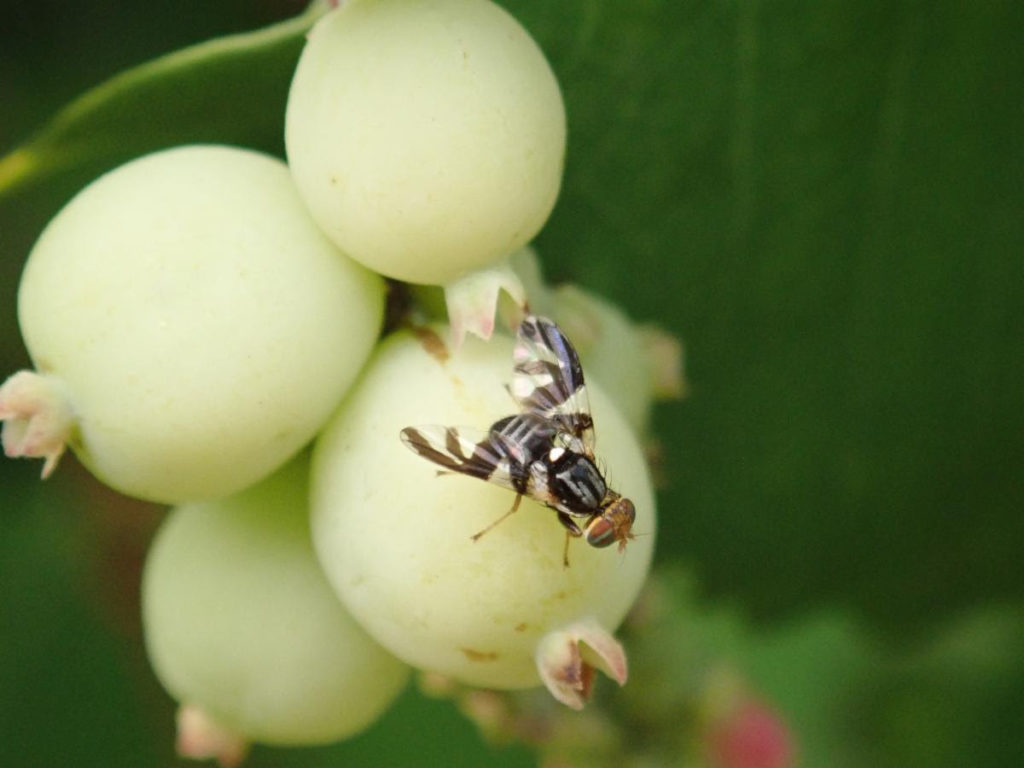You don’t need to look at a calendar to know we’re halfway through summer. Many of our native plants have gone to fruit or seed, and the grasshoppers are out in full force. You can barely walk near a patch of grass without flushing out a dozen or so hoppers; they’re more noticeable than ever now that most of them have reached adulthood. Even though we’re rounding the corner on the most fruitful part of bug season, there’s still plenty to get out and observe. Happy buggin’!

Carolina Grasshopper
Dissosteira Carolina
In flight, these large hoppers may be mistaken for Mourning Cloak Butterflies because of their similar size, bobbing flight, and wing coloring. Carolina grasshoppers are abundant across the U.S. and Canada in all habitats, including roadsides, vacant lots, and gravel quarries. They feed on both grasses and broadleaf herbaceous plants like dandelions. The sharp ridge on top of the head / thorax with one deep cut is a good identifier in combination with other characteristics.
Glenn Marangelo, August 16th, 2023. Missoula, MT.
Tephritid Fruit Fly
Rhagoletis sp.
Up close, it’s easy to see that this is a fly. But from a distance, you’d be forgiven for mistaking this fruit fly for a jumping spider. The striking pattern on the fly’s wings resembles the front legs of a jumping spider; the fly will even flutter its wings in a way that mimics how these spiders use their legs to search or signal. The genus name is at least partially derived from the Ancient Greek rhago, meaning “a kind of spider”; a fitting name for this cryptic little spider mimic.
Brenna Shea, August 16th, 2023. Missoula, MT.


Giant Water Bug
Lethocerus americanus
This is our second giant water bug sighting in as many weeks; Brady found this individual swimming around in his dog’s bowl. After the discovery, he moved the giant toebiter (so named for their habit of giving unsuspecting toes a sharp poke with their piercing and sucking mouthparts) to a more suitable habitat. They generally live in stagnant, slow-moving waters where they capture and consume other insects, small fish, frogs, and even snakes.
Brady Schwertfeger, August 16th, 2023. Missoula, MT.
Red-femured Milkweed Borer
Tetraopes femoratus
Find a good patch of milkweed (Asclepias spp.) and you are likely to spot these boldly-colored longhorn beetles. As the name suggests, they specialize on milkweed; the larvae feed on the roots and the adults feed on the leaves and flowers. By feeding on milkweed, these insects absorb the plant’s chemicals and are toxic to potential predators. Adults will be present through September, with the larvae boring into the stems and overwintering in the roots.
Glenn Marangelo, August 9th, 2023. Missoula, MT.


Half Black Bumble Bee
Bombus vagans
The Half-black Bumble Bee is a small to medium sized bumblebee with a wide distribution in North America, ranging across Canada and the Northern US. In the central and eastern US, it is found as far south as Georgia. Covering such a wide region, it is not surprising that they feed from a wide variety of plants. Their hairs appear a bit shaggier than other bumble bees and generally have a black circle / patch in the middle of the thorax. Both queens and males are active well into October.
Brenna Shea, August 16th, 2023. Missoula, MT.
Western Tiger Swallowtail
Papilio rutulus
We are not 100% sure, but believe this is a Western Swallowtail Caterpillar. The Two-tailed Swallowtail caterpillar (Papilio multicaudata) looks very similar in appearance. We’ve read that “The best clue [for the Two-tailed] is the black edge of the pupil of the large eye spot, which is a thin line. In Western it should be a thick border.” (David J. Ferguson, Contributing Editor for BugGuide). Both are among our largest and arguably most spectacular butterflies, sporting bold black and yellow wings.
Ali Marchner, August 14th 2023. Missoula, MT.


Great Spangled Fritillary
Speyeria cybele
Fritillaries can be difficult to ID, especially when their wings aren’t fully intact like this individual. Butterfly wings grow ragged with wear as they age; the edges fray and the colors seem to fade. While it may be disheartening to see, take it as a sign that this butterfly lived a long, fruitful life. This species flies throughout much of North America from May-September in open areas, moist fields, and prairies.
Chad Moore, August 13th, 2023. Missoula, MT.
Two-striped Grasshopper
Melanoplus bivittatus
Aptly named, these large grasshoppers have a pair of pale yellow stripes running along the top of the body from above the eyes to the hind tip of the wings. Their eggs survive the winter, with the nymphs hatching by late April to early May. They are polyphagous—meaning they are capable of eating a wide variety of food and will cannibalize their own kind in times of food shortage.
Carolyn Taber, August 12th, 2023. Rattlesnake Area, Missoula, MT.


Spittlebug
Superfamily Cercopoidea
This isn’t a trick photo; you can’t actually see the bug we’re highlighting here. That’s because it’s hidden under the spit-like conglomeration on the plant stem. It’s pretty easy to see where spittlebugs get their name. As nymphs, they consume the diluted sap found in the xylem of plants, then excrete the excess water to produce the characteristic “spit” they hide in.
Carolyn Taber, August 12th, 2023. Rattlesnake Area, Missoula, MT.
Elm Leaf Beetle
Xanthogaleruca luteola
This banana-yellow leaf beetle is an introduced pest in the United States; they are known to skeletonize the leaves of several elm species and can cause serious damage if not taken care of quickly. This individual will likely go into a hibernation state soon, where it will stay until the spring. When they emerge, the adults lay eggs on the underside of elm leaves in clusters.
Brenna Shea, August 12th, 2023. Missoula, MT.
